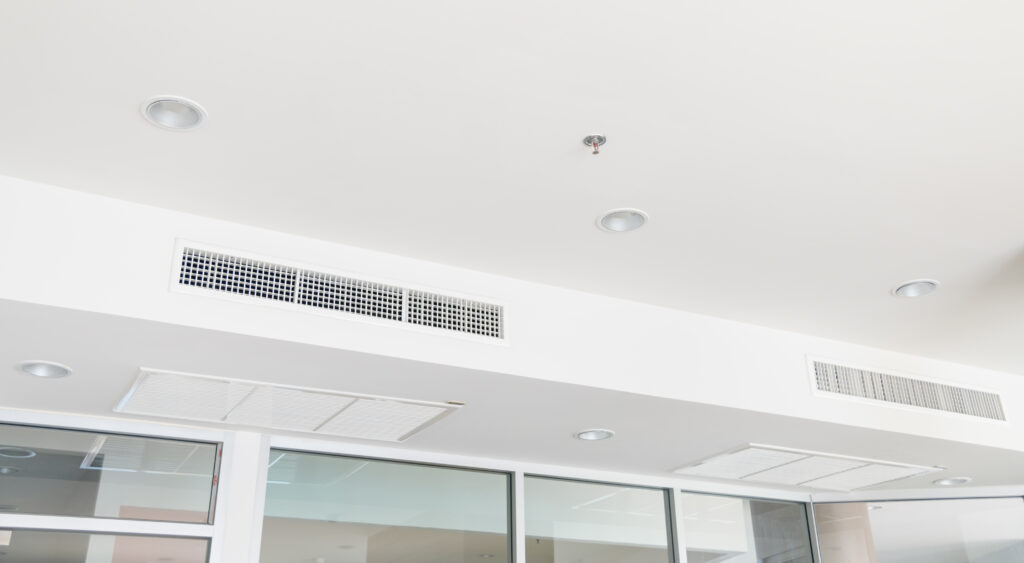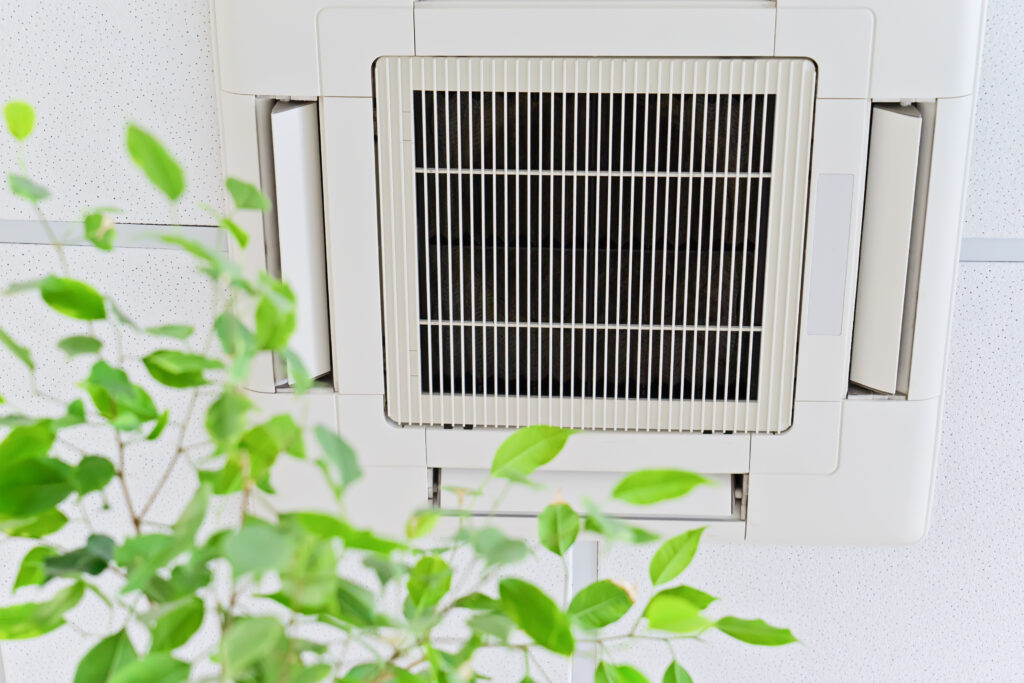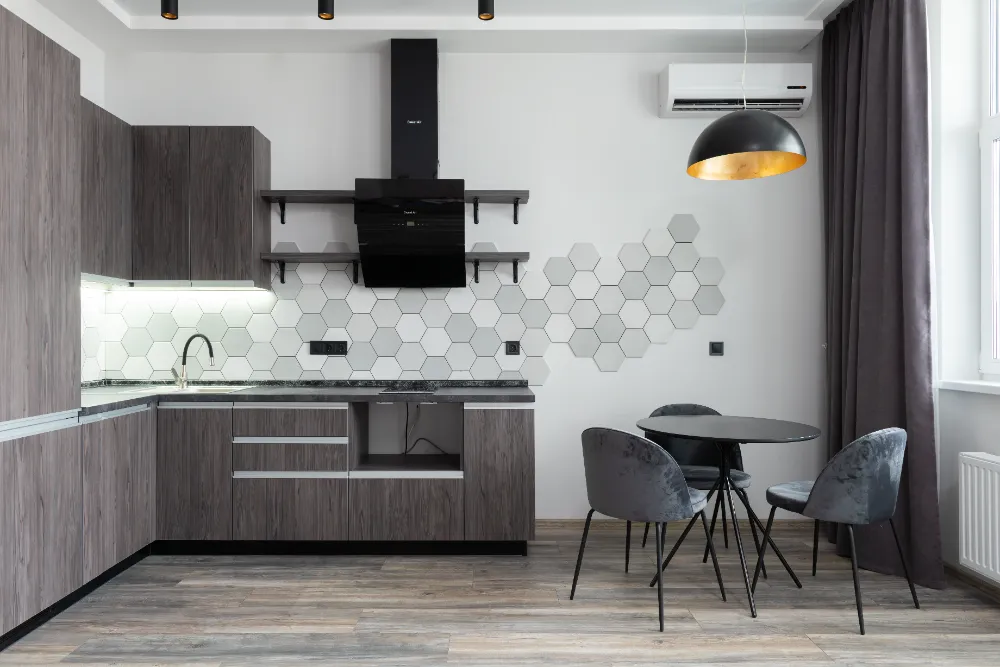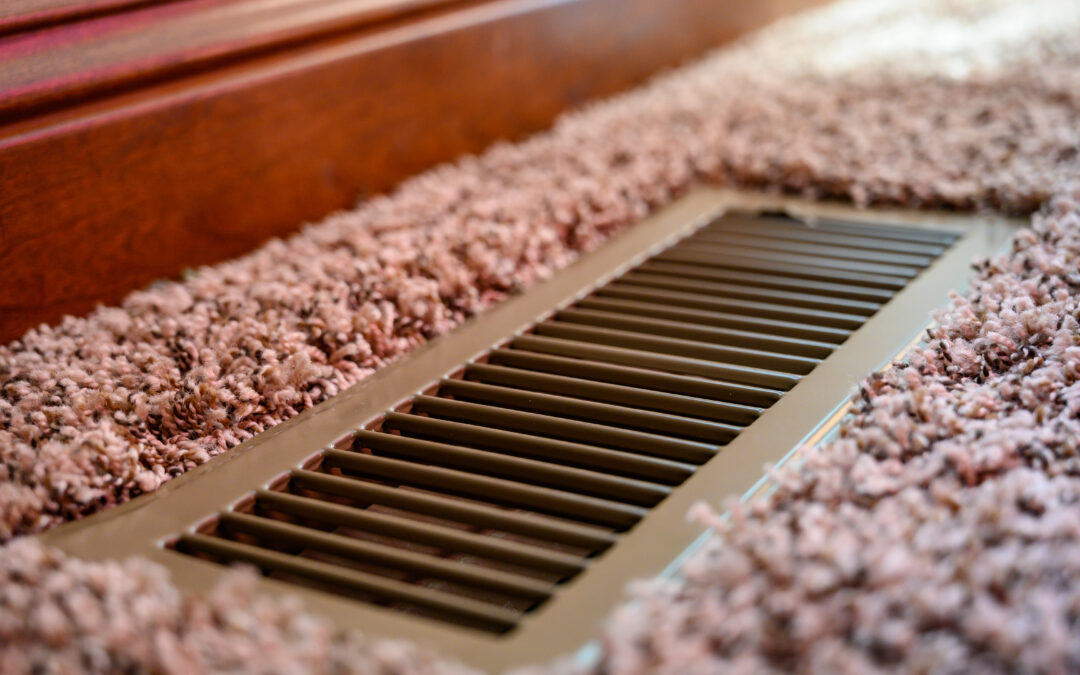Have you ever noticed the vents in your home, be it on the floors or ceilings? It’s an important element to consider when deciding where to install them. Floor vents provide a unique set of benefits and drawbacks that can help you make an informed decision about what ventilation system is most suitable for your living space. This blog post will discuss the different elements associated with floor vs ceiling vents, so read on if you want to find out more about how these two solutions compare. In this article, we go over floor vents vs ceiling vents and differentiate between the two to give you a better understanding about ventilation placement.

Identifying the difference between floor and ceiling vents
When it comes to HVAC systems, it’s important to understand the difference between floor and ceiling vents. While both types of vents are used to circulate air throughout the home, they are designed to work in different ways. Floor vents are positioned low to the ground and are best suited for heating applications, as they allow warm air to rise up and fill the room. On the other hand, ceiling vents are positioned high up and are ideal for cooling purposes, as they allow cool air to fall down and create a gentle breeze. Knowing the difference between these two types of vents can help you optimize the efficiency and effectiveness of your HVAC system, ensuring that your home stays comfortable year-round.
Advantages of installing floor vents
Floor vents in homes and buildings have become a popular option for a variety of reasons. First and foremost, they offer a more efficient method of heating and cooling a space by allowing air to flow more freely throughout the room. This results in a more evenly distributed temperature, making it more comfortable for occupants. Additionally, floor vents are a safer option for families with small children or pets as they are less likely to be damaged or pulled out of the wall compared to traditional wall vents. Furthermore, floor vents can be a more aesthetically pleasing option, as they are often flush with the floor and blend seamlessly into the room’s design. Overall, installing floor vents can provide significant advantages in terms of comfort, safety, and design.

Considerations when installing ceiling vents
When it comes to installing ceiling vents, there are a number of important factors to consider. Firstly, it’s important to choose the correct size for the room you’re ventilating – too small and the vent won’t be effective, too large and it will waste energy. You also need to take into account the placement of the vent, making sure it’s located in an area where it will distribute air evenly and not cause discomfort or draughts. Consider the noise level of the vent, too – you don’t want a noisy fan interrupting your peaceful relaxation time! And finally, don’t forget to think about the aesthetics – a well-chosen vent can actually enhance the overall design of your room. So, take your time, do your research, and choose the perfect ceiling vent for your needs.
How to choose the right type of vent for the room
Choosing the right type of vent for a room can make a big difference in the room’s temperature and air quality. Before selecting a vent, you should consider factors like the room’s size, the amount of foot traffic in the area, and the ventilation system’s capacity. For instance, if you have a large room that is frequently occupied, you may want to choose a vent with a larger capacity. You should also consider the room’s purpose; a kitchen vent, for example, will need to be powerful enough to remove cooking odors and smoke. By taking the time to evaluate these factors and researching different types of vents, you can ensure that you select the right vent for your room’s needs.
The importance of proper ventilation in a home
A well-ventilated home is crucial for maintaining a happy, healthy environment. Proper ventilation allows fresh air to circulate throughout the house, which helps reduce the risk of mold growth, mildew, and unwanted odors. It also helps regulate temperature and humidity levels, which can make a significant impact on overall comfort. However, poor ventilation can lead to a buildup of harmful pollutants, such as carbon monoxide, dust, and allergens, which can negatively affect indoor air quality and lead to health problems. By ensuring proper ventilation in your home, you can create a safe and comfortable living space for you and your family.

Factors to look for when selecting a ventilation system for your home
Many homeowners might not realize the importance of a good ventilation system. It is not just about removing unpleasant odors or keeping the air fresh inside your home. It is also about maintaining a healthy indoor environment and preventing harmful pollutants from damaging your family’s health. When selecting a ventilation system, there are a few factors to keep in mind. First and foremost, you need to determine the size of your home and your family’s needs. You will also need to consider the various types of ventilation systems available and their energy efficiency ratings. Other factors to look for include their noise levels, maintenance requirements, and the costs associated with their installation and operation. By taking the time to research and assess these factors, you can choose a ventilation system that will offer you and your family the benefits of fresh air and a healthy indoor environment.
In conclusion, air vents play a key role in proper ventilation, and there are a variety of options available to best meet the needs of your particular home. When choosing between floor and ceiling vents, it is vital to look at things such as airflow, power source, noise level, and other factors. Furthermore, installing one type of vent may be able to reduce heat loss or save energy while another may provide better coverage across the whole space; it all depends on your specific situation. The importance of good ventilation should not be underestimated—it helps regulate temperatures inside and outside your home by ensuring pollutants don’t build up. Furthermore, you can save money on cooling/heating bills and extend the life of HVAC system components with proper installation. There are many possibilities for selecting a ventilation system for your home so research thoroughly and see which type works best for you.


Recent Comments